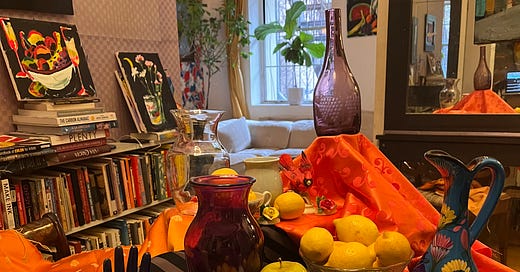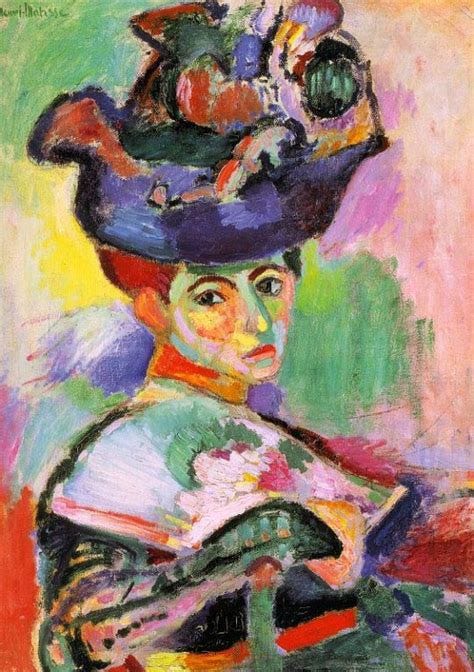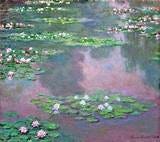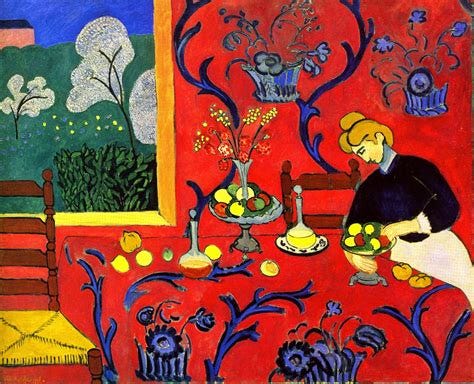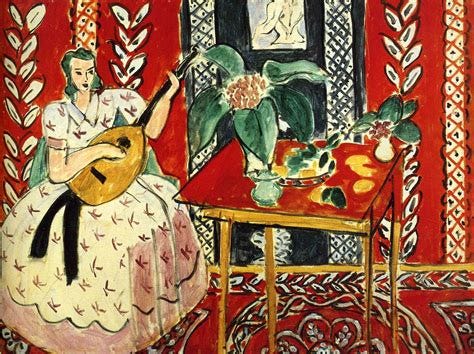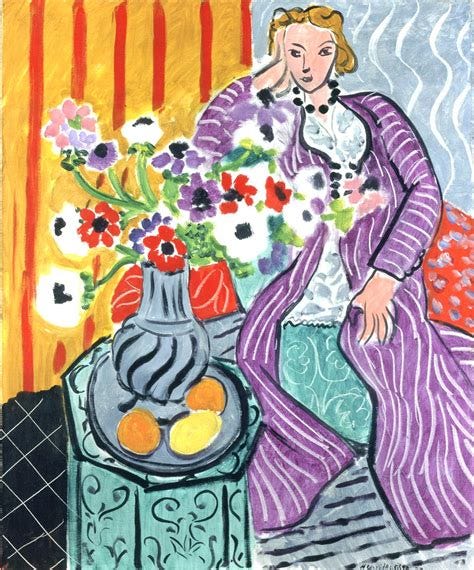Last night our painting class was inspired by Matisse. We started with a still life like this one stuffed full of lemons, which seem to appear in all of Matisse’s paintings and are objects challenge both new painters and painters with many years behind them, and full of textiles like the ones that fill the work of Matisse.
But the big focus of the class was Matisse’s use of black. When you look at work being done around the same period of Matisse’s masterpieces you see how his use of black sets him apart from his peers. His wild palette and love of black first appears in The Woman in the Hat (1905), the painting that signaled Matisse as an artist of the future.
And when you compare The Woman in the Hat to other paintings created in the same year you see just how wildly out of nowhere that painting must have seemed and why it created such a furor at the Salon d'Automne.
Here is a 1905 Remington:
Renoir was using this palette in 1905:
And in 1905 Monet was out in the pond painting his water lilies in a pastel dreamscape largely void of black:
Matisse follows up that portrait of his wife with a series of black-saturated paintings where black serves almost as a neutral to give the eye a place to rest in his sea of patterns, arbitrary color and objects.
Compare the palette of these Matisse works compared to those less dynamic palettes that are mainly absent of black that are found in the other artworks.
So if you want a Matisse-inspired day of painting get the bigger jar of black and apply it with abandon, fill your canvas with patterns and bold colors and maybe try to hit the south of France.
WHO NEEDS A MUSE? Need an idea of what to paint before you drag out your black paint and striped comforter? Look for your most patterned vase, buy a bag of lemons at Trader Joe’s and see if you have a striped sheet, paisley blanket or polka dotted towel. Build a Matisse-inspired still life by a window, draping your fabric with the goal of having the patterns move the eye around the canvas. Put Lemons here and there and use black to give the eyes a break from all that visual chaos.

